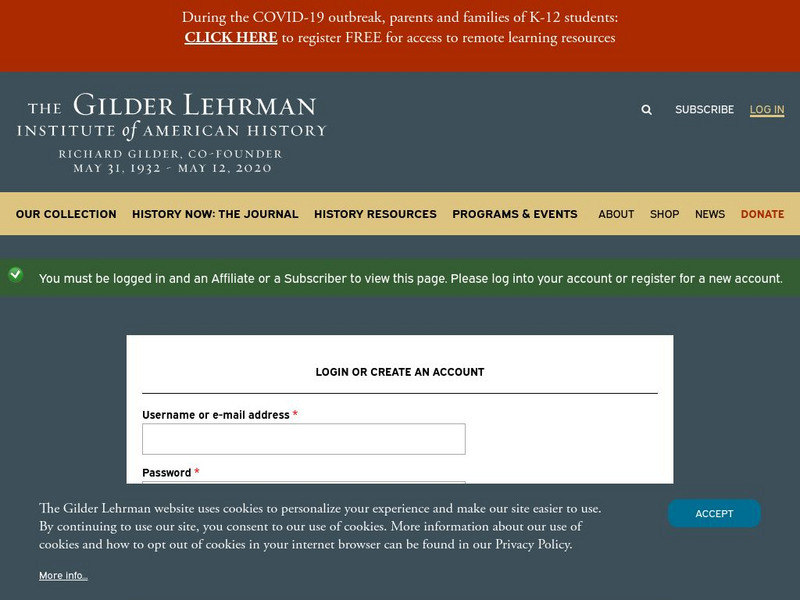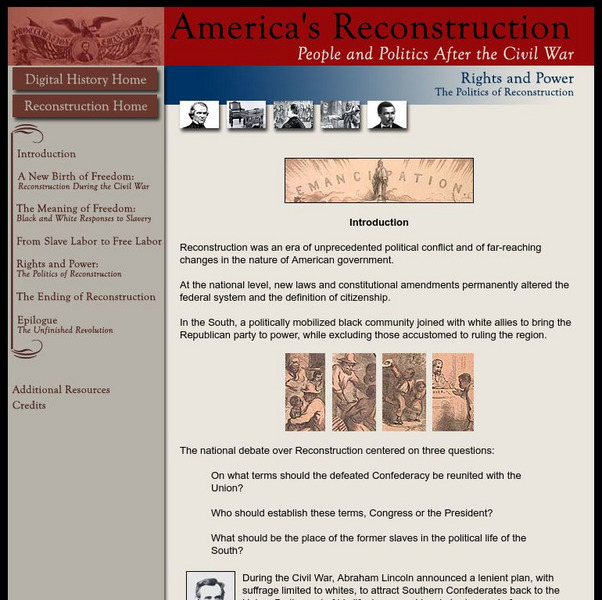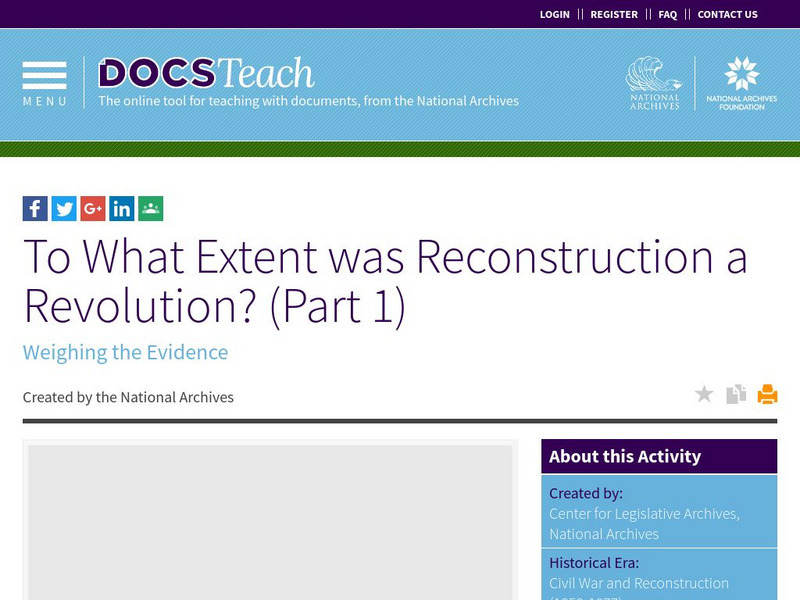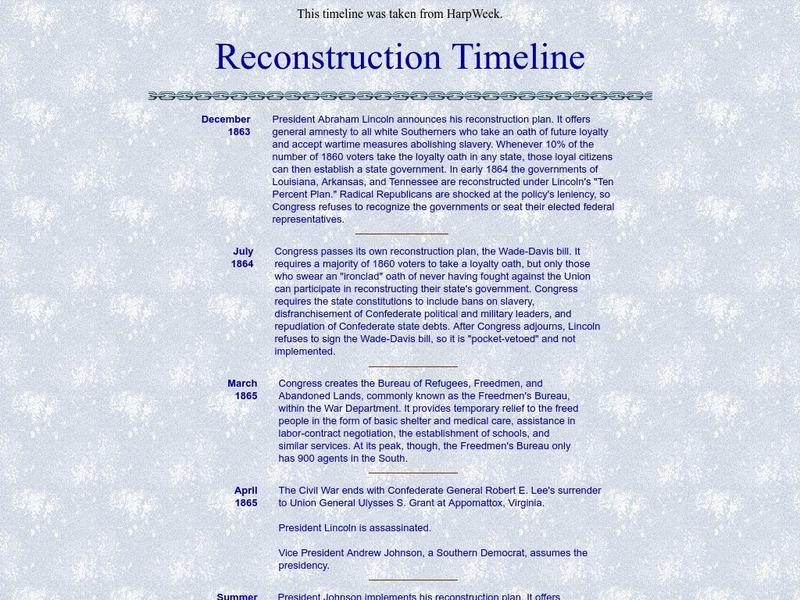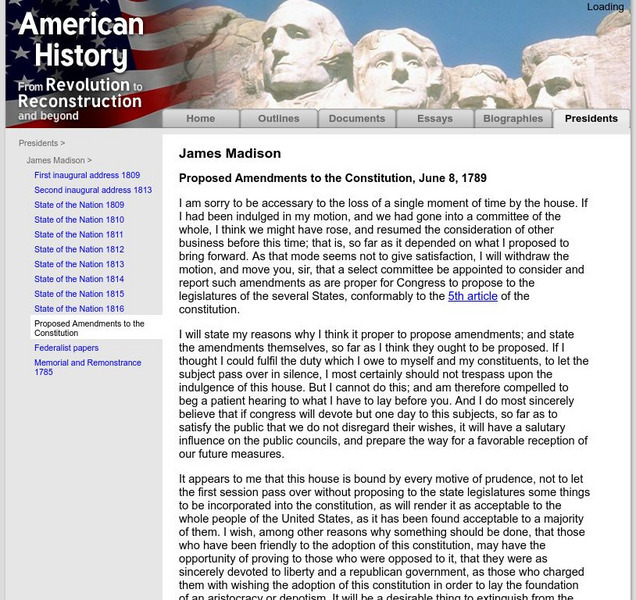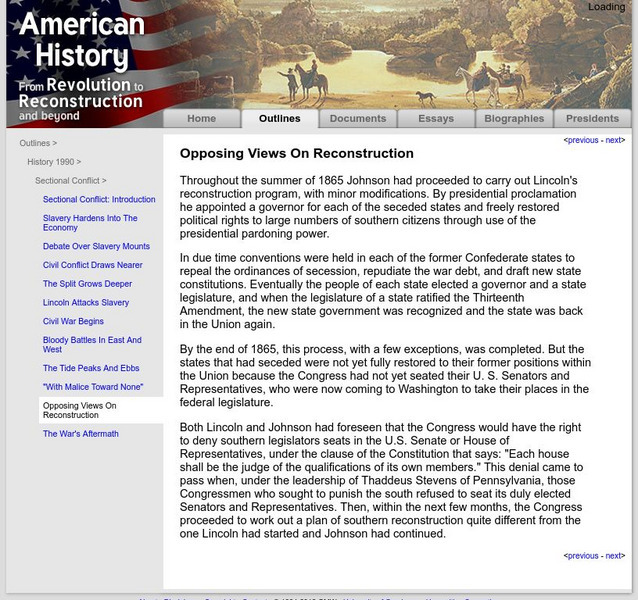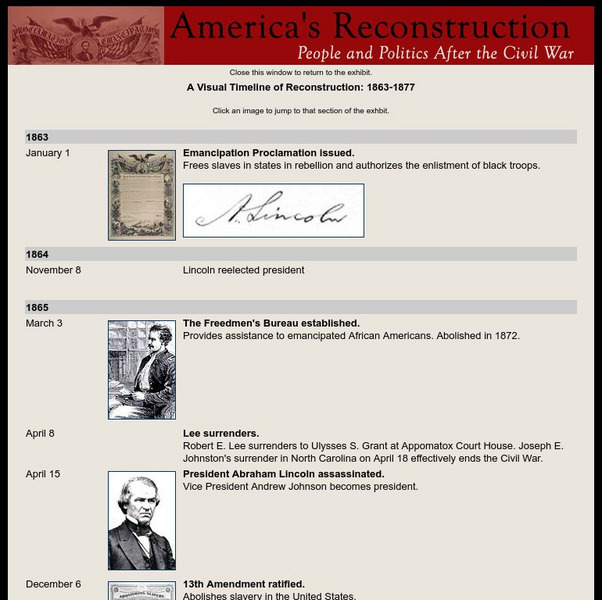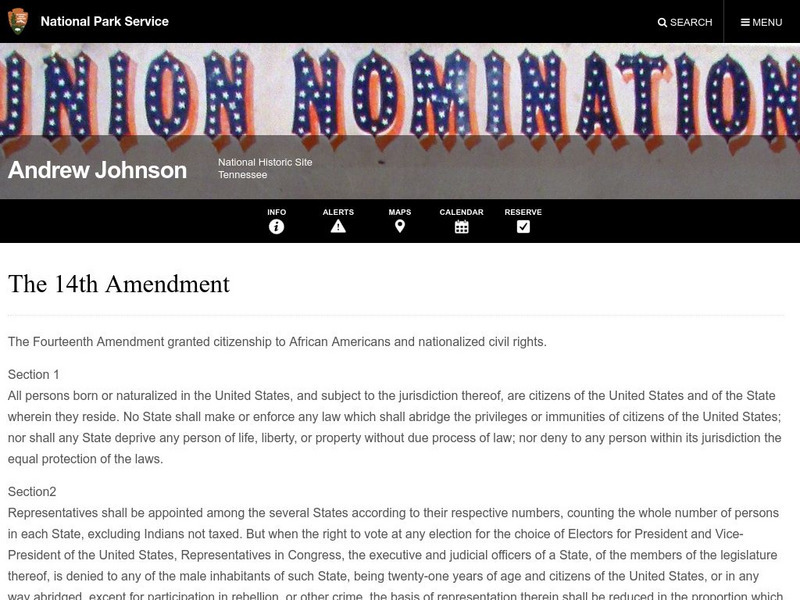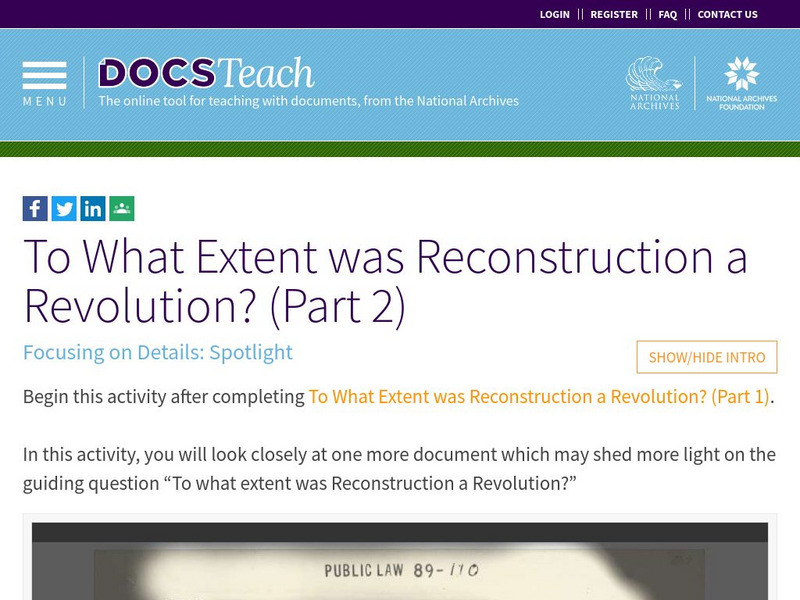Hi, what do you want to do?
PBS
Pbs Learning Media: The Reconstruction Amendments
In this interactive instructional activity, students will understand and explain the key provisions of the 13th, 14th and 15th Amendments to the U.S. Constitution, commonly referred to as the Reconstruction Amendments.
South Carolina Educational Television
Know It All: Reconstruction Amendments
Fifth graders will complete research on one of the Reconstruction amendments then create a project demonstrating their knowledge of that particular amendment as if they are supporting that amendment during the era it was created. Their...
Gilder Lehrman Institute of American History
Gilder Lehrman Institute: The Reconstruction Amendments
[Free Registration/Login Required] An article that discusses the 13-15th amendments and their impact on social history.
PBS
Pbs Learning Media: Documenting Brown: The Fourteenth Amendment
The background essay provided in this lesson plan on the later ramifications of the 14th Amendment explains the Congressional legislation of all types during Reconstruction. Click on the 'View' button to read the Amendment.
Digital History
Digital History: America's Reconstruction: Rights and Power
This resource provides information about Reconstruction, the United States Government, slavery, and civil rights.
Other
University of Western Georgia: Reconstruction in the South
An excellent distillation of the many issues addressed in the Reconstruction period in the South in the twelve years after the end of the Civil War.
US National Archives
National Archives: To What Extent Was Reconstruction a Revolution? (Part 1)
Should Reconstruction be viewed as a revolution or not? Using primary source documents, students can weigh the evidence and come up with their conclusion. This lesson plan can be used as a whole class, small group, or individual activity.
PBS
Pbs Learning Media: The Fourteenth Amendment Part I
This video segment from The Supreme Court introduces viewers to the 14th amendment.
Library of Congress
Loc: African American Odyssey: Reconstruction and Its Aftermath
Part of a virtual exhibit by the Library of Congress, this site details the effects of the Civil War and Reconstruction on the newly freed slaves. It contains photographs of artwork and a map from the period.
Virginia History Series
Virginia History Series: Virginia State History Reconstruction to 1900 [Pdf]
Much of Virginia was devastated after the Civil War so a period of rebuilding commenced. Follow Reconstruction through the different plans, the effects on African-Americans and the South. This slideshow has pictures,charts, and maps to...
National Constitution Center
National Constitution Center: Thirteenth Amendment [Pdf]
Primary source document, informational text and questions for discussion included for students studying issues surrounding the abolition of slavery and the 13th Amendment to the Constitution.
Mount Holyoke College
Mt. Holyoke: Reconstruction Timeline
Here's a concise timeline that highlights the important facets of reconstruction from the announcement of Abraham Lincoln's reconstruction plans to the end of reconstruction at the election of Rutherford B. Hayes.
iCivics
I Civics: Civil War & Reconstruction
The Civil War and Reconstruction Era brought about the end of slavery and the expansion of civil rights to African Americans through the 13th, 14th, and 15th Amendments. Compare the Northern and Southern states, discover the concepts of...
Digital Public Library of America
Dpla: The Fifteenth Amendment
The documents, images, photographs, and articles in this set explore the passage of the Fifteenth Amendment, responses to it across the United States, and its long-term impact on the struggle for equal voting rights. Includes a teaching...
OpenStax
Open Stax: Radical Reconstruction, 1867 1872
This section explains the purpose of the second phase of Reconstruction and some of the key legislation put forward by Congress, describes the impeachment of President Johnson, and discusses the benefits and drawbacks of the Fifteenth...
PBS
Pbs Learning Media: Primary Source Set: The Fifteenth Amendment
This collection uses primary sources to explore the Fifteenth Amendment.
University of Groningen
American History: Presidents: James Madison: Proposed Amendments to Constitution
Text of James Madison's "Proposed Amendments to the Constitution," June 8, 1789. Madison states his reasons for the amendments in view of the anti-federalist feelings in many of the colonies. The proposal explains in Madison's own words...
Stanford University
Sheg: Document Based History: Reading Like a Historian: Reconstruction Sac
[Free Registration/Login Required] Young scholars use primary source documents to investigate central historical questions. In this structured academic controversy, students examine constitutional amendments, a Black Code, a personal...
University of Groningen
American History: Outlines: Opposing Views on Reconstruction
A look at how Andrew Johnson tried to carry out Lincoln's plan for reconstruction. Read onto the second page to find out how the congressional plan thwarted Johnson and was much more punitive.
Other
Basd: Reconstruction [Pdf]
A very clear document outlining the various reconstruction plans, the problems for both whites and blacks during Reconstruction, and the amendments added concerning the abolition of slavery, civil rights, and suffrage. Requires Adobe...
Other
Ithaca High School Social Studies Department: Plans for Reconstruction
A great chart comparing Lincoln's and Johnson's reconstruction plans with the plans offered by the Radical Republicans.
Digital History
Digital History: America's Reconstruction: A Visual Timeline of Reconstruction
This resource provides a timeline of the Reconstruction era in the South.
Curated OER
National Park Service: Andrew Johnson Historic Site: Fourteenth Amendment
The complete text of the 14th Amendment of the U.S. Constitution.
US National Archives
Docsteach: To What Extent Was Reconstruction a Revolution? (Part 2)
This activity is a continuation of the lesson for Part 1. In it, students will examine the Voting Rights Act of 1965 and determine whether their analysis of this document changes their responses to the guiding question in Part 1...






